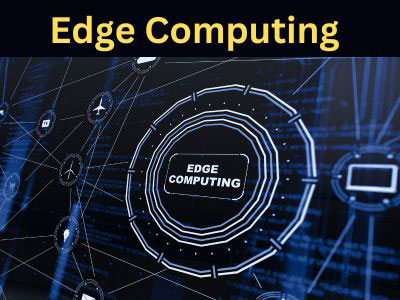Key Takeaway
5G has revolutionized edge computing by enabling ultra-low latency communication and faster data transfer speeds. One of the most significant innovations is the combination of 5G and edge computing to support applications like autonomous vehicles, augmented reality, and real-time analytics. This synergy allows devices to process massive amounts of data efficiently.
By leveraging 5G’s high bandwidth, edge computing can handle real-time data streams with unparalleled speed and reliability. This innovation has paved the way for smarter IoT systems and industrial automation, enabling faster decision-making and better user experiences in connected environments.
How 5G Accelerates Edge Computing Adoption
The advent of 5G technology is poised to accelerate the adoption of edge computing by providing faster, more reliable, and low-latency connectivity. 5G networks offer significantly higher bandwidth and lower latency than previous generations of cellular technology, enabling real-time data processing at the edge. This combination of 5G and edge computing allows businesses to deploy applications that were previously not possible due to network limitations.
For example, 5G enables the deployment of autonomous vehicles, where split-second decision-making is required based on real-time data from sensors and cameras. By combining 5G with edge computing, vehicles can process this data locally, ensuring that decisions are made without delay. Similarly, in healthcare, 5G and edge computing enable remote surgeries and real-time patient monitoring, improving patient care and reducing response times. As 5G networks continue to expand globally, edge computing will become even more essential for delivering the low-latency, high-performance applications needed in industries such as manufacturing, automotive, and healthcare.

Real-Time Analytics with 5G and Edge Integration
The synergy between 5G and edge computing is transforming real-time analytics. 5G’s ultra-low latency and high-speed connectivity enable edge devices to process data at lightning-fast speeds. This combination is particularly beneficial for applications like autonomous vehicles, where every millisecond counts, or in smart cities, where sensor data must be analyzed instantly to optimize traffic flow.
Edge computing ensures that data generated at the source—such as IoT sensors, cameras, or machinery—doesn’t need to travel long distances to the cloud. Instead, it is processed locally, delivering actionable insights in real time. 5G enhances this by providing the bandwidth and speed needed to support thousands of devices simultaneously.
For engineers, understanding the integration of 5G with edge is crucial. Real-time analytics powered by this duo unlocks unprecedented opportunities, from predictive maintenance in industries to immersive augmented reality experiences.
You May Like to Read
Smart City Applications Using Edge and 5G
Smart city applications benefit significantly from combining edge computing and 5G networks. In a smart city, edge devices can monitor traffic, air quality, and even energy usage in real-time. With the ultra-low latency provided by 5G, these devices can make decisions instantly, optimizing traffic flow, reducing energy consumption, and improving public safety.
For instance, smart traffic management systems can use edge computing to process data from traffic cameras and sensors at intersections, adjusting signal timings in real-time to avoid congestion. Similarly, smart waste management systems can monitor garbage bins and optimize pickup schedules, reducing fuel consumption and improving efficiency.
Autonomous Vehicles Powered by Edge and 5G Connectivity
Autonomous vehicles are one of the most exciting applications of edge computing combined with 5G connectivity. These vehicles rely on an array of sensors, cameras, and radar to navigate their environments. The data generated by these sensors needs to be processed in real-time to ensure that the vehicle can make instant decisions, such as stopping for obstacles or adjusting its route.
With edge computing, much of the heavy data processing is done locally, on-board the vehicle. This allows the vehicle to process real-time data almost instantly, avoiding the delays associated with sending the data to the cloud for analysis. In autonomous vehicles, even a slight delay in decision-making can lead to dangerous situations, so processing data on the edge is critical for safety and functionality.
The integration of 5G enhances the capabilities of edge computing by providing ultra-low latency and high-speed communication. This allows for quick transmission of data between the vehicle and external infrastructure, such as traffic lights or nearby vehicles, enabling better coordination in complex driving scenarios.
Emerging Use Cases in Healthcare with Edge and 5G
The integration of edge computing and 5G technology is set to revolutionize the healthcare industry. Edge devices can process patient data locally, ensuring that critical health information is analyzed in real-time, while 5G connectivity enables the fast transmission of data for remote consultations and diagnostic purposes.
Emerging use cases include remote surgeries, where doctors can perform surgeries in real-time with data processed locally at the edge, ensuring minimal latency. Wearable health devices will also benefit from edge computing, enabling real-time monitoring of vital signs such as heart rate, blood oxygen levels, and glucose levels, sending alerts to healthcare professionals when necessary.
Conclusion
In conclusion, a recent innovation in edge computing enhanced by 5G is the deployment of ultra-low-latency applications, such as real-time remote monitoring and autonomous vehicle control. 5G networks offer the high-speed connectivity needed to transmit vast amounts of data quickly and reliably, making edge computing even more powerful.
This innovation is opening up new possibilities in industries such as healthcare, transportation, and manufacturing, where real-time decision-making is crucial. The synergy between edge computing and 5G will continue to drive innovation and enable smarter, more responsive applications.
